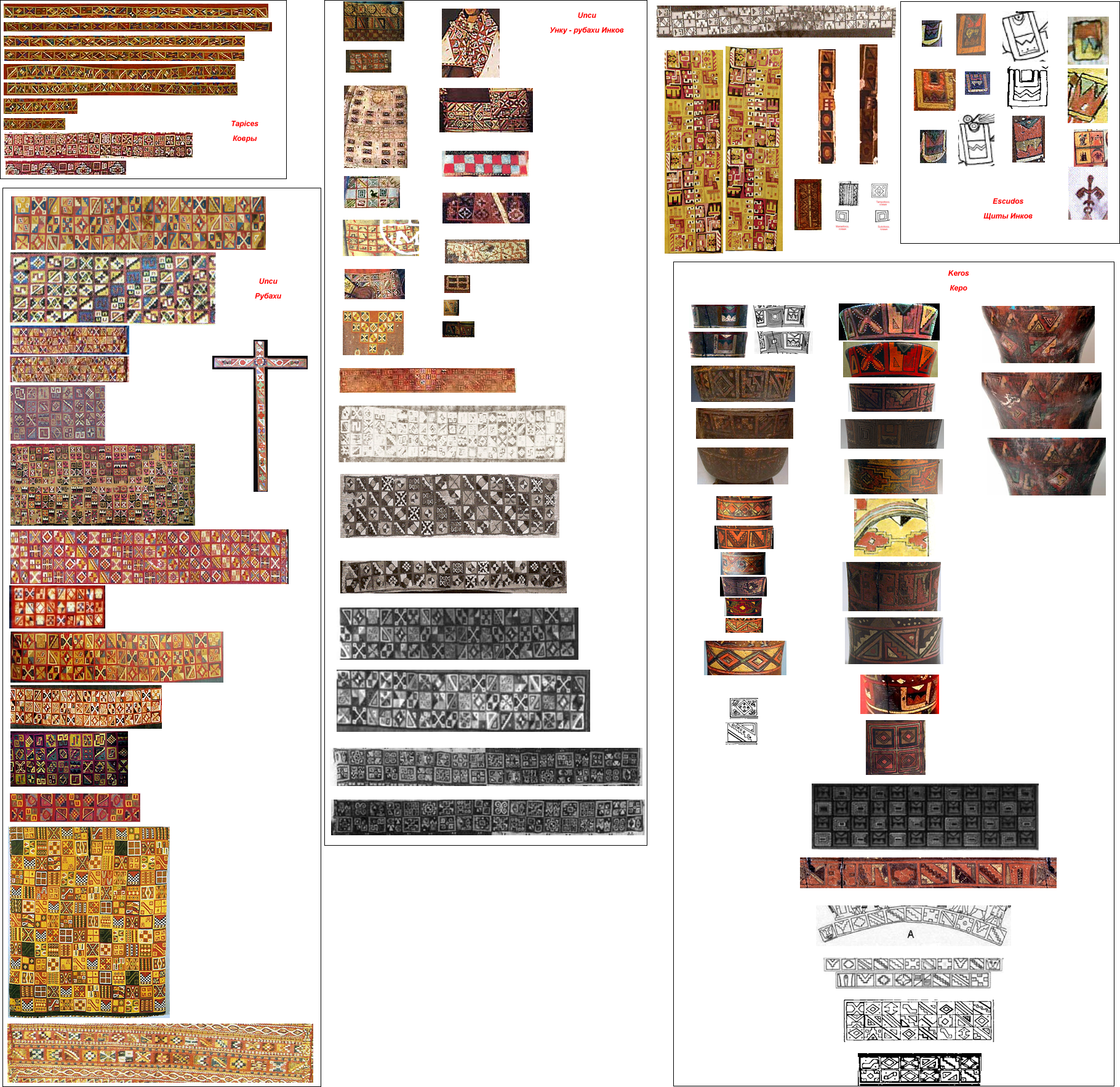Qompi on:
[Wikipedia]
[Google]
[Amazon]
 Cumbi (Qunpi, Qompi, Kumpi) was a fine luxurious fabric of the
Cumbi (Qunpi, Qompi, Kumpi) was a fine luxurious fabric of the
''Cumbi camayos'' (cumbi cloth makers). Cumbi weaving was their only job. It was allowed for specific usages like the clothing of the rulers, gifts for the nobles, and trading purposes.
*The finest cloth type of Qunpi had a thread count of 600, was woven by ''acllas'' exclusive female weavers in
 Cumbi (Qunpi, Qompi, Kumpi) was a fine luxurious fabric of the
Cumbi (Qunpi, Qompi, Kumpi) was a fine luxurious fabric of the Inca Empire
The Inca Empire (also known as the Incan Empire and the Inka Empire), called ''Tawantinsuyu'' by its subjects, (Quechua for the "Realm of the Four Parts", "four parts together" ) was the largest empire in pre-Columbian America. The admin ...
. Elites used to offer cumbi to the rulers
A ruler, sometimes called a rule, line gauge, or scale, is a device used in geometry and technical drawing, as well as the engineering and construction industries, to measure distances or draw straight lines.
Variants
Rulers have long ...
, and it was a reserved cloth for Royalty. Common people were not allowed to use Cumbi. Cumbi was a phenomenal textile art of Andean textiles
The Andean textile tradition once spanned from the Pre-Columbian to the Colonial era throughout the western coast of South America, but was mainly concentrated in Peru. The arid desert conditions along the coast of Peru have allowed for the pres ...
.
Structure
The fabric was a finetapestry
Tapestry is a form of textile art, traditionally woven by hand on a loom. Tapestry is weft-faced weaving, in which all the warp threads are hidden in the completed work, unlike most woven textiles, where both the warp and the weft threads may ...
structure woven
Woven fabric is any textile formed by weaving. Woven fabrics are often created on a loom, and made of many threads woven on a warp and a weft. Technically, a woven fabric is any fabric made by interlacing two or more threads at right angles to on ...
with superfine local cotton
Cotton is a soft, fluffy staple fiber that grows in a boll, or protective case, around the seeds of the cotton plants of the genus ''Gossypium'' in the mallow family Malvaceae. The fiber is almost pure cellulose, and can contain minor perce ...
and vicuña wool
Vicuña wool refers to the hair of the South American vicuña, an animal of the family of ''camelidae''. The wool has, after shahtoosh, the second smallest fiber diameter of all animal hair and is the most expensive legal wool.
Properties
The d ...
. The male weavers used upright looms.
Inca textiles
Textile production was the second most important after agriculture in the Inca period. The strength was the raw material likealpaca
The alpaca (''Lama pacos'') is a species of South American camelid mammal. It is similar to, and often confused with, the llama. However, alpacas are often noticeably smaller than llamas. The two animals are closely related and can successfu ...
and llama
The llama (; ) (''Lama glama'') is a domesticated South American camelid, widely used as a List of meat animals, meat and pack animal by Inca empire, Andean cultures since the Pre-Columbian era.
Llamas are social animals and live with othe ...
wool as well as indigenous cotton
Cotton is a soft, fluffy staple fiber that grows in a boll, or protective case, around the seeds of the cotton plants of the genus ''Gossypium'' in the mallow family Malvaceae. The fiber is almost pure cellulose, and can contain minor perce ...
. Textile materials were classified into many categories, Chusi was the coarsest cloth used for blankets and rugs.The closest to Cumbi are the following:
Awsaka
Awaska, a warp faced plain weave cloth with a 120thread count
Textile fibers, threads, yarns and fabrics are measured in a multiplicity of units.
* A fiber, a single filament of natural material, such as cotton, linen or wool, or artificial material such as nylon, polyester, metal or mineral fiber, or man-m ...
for regular use, like daily household goods. Awaska was used for blankets and rugs. It was a coarse wool material from sheep or llama.
Qunpi
Qunpi was a finer and more delicate type than Awaska, divided further into two varieties: *Male weavers wove this type. Highly skilled weavers were engaged in weaving Cumbi. They were calledCuzco
Cusco, often spelled Cuzco (; qu, Qusqu ()), is a city in Southeastern Peru near the Urubamba Valley of the Andes mountain range. It is the capital of the Cusco Region and of the Cusco Province. The city is the seventh most populous in Peru; ...
. The fabric was used for defined practices like religious rituals and royal use only. This particular type of cloth was unmatchable throughout the world till machines overtook in the 19th century.
Cumbi was a valuable textile material; hence the material used was the finest wool from lamb. However, the richest version of the cloth was woven with Vicuña
The vicuña (''Lama vicugna'') or vicuna (both , very rarely spelled ''vicugna'', its former genus name) is one of the two wild South American camelids, which live in the high alpine areas of the Andes, the other being the guanaco, which live ...
.
Use
Cumbi and Tokapu, a traditional decorative work, was exclusive to the Inca monarchy. After the destruction of the Inca state, the rules relaxed, and nobles were allowed to use the fabric. Cumbi was used for Royal usages, e.g., various clothing items such asUncu
Uncu (Unku) was a men's garment of the Inca Empire. It was an upper-body garment of knee-length; Royals wore it with a mantle cloth called '' yacolla.'' Women wore a long dress known as an anaku.
Structure
Uncu was similar to a long tunic, ra ...
and attire for religious rituals.
References
{{Reflist Woven fabrics Textile arts of the Andes